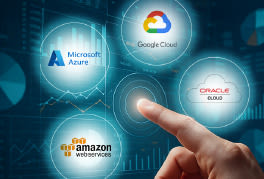In today’s data-driven world, organizations face a difficult challenge: how to choose the right technology vendors in an ever-evolving marketplace. Vendor independence is one of Thorogood’s core operating principles as it enables us to build the right solutions for our clients’ business needs.
What vendor independence means
Vendor independence is the ability to design and implement solutions without bias towards any one technology provider. Some services companies are closely aligned with particular vendors, and their recommendations inevitably steer clients toward those tools, whether or not they are the best fit. At Thorogood, our goal is different. We prioritize solving our clients’ problems by building solutions around their needs, not around vendor incentives.
This approach means that we can work seamlessly with whatever technologies a client already uses, while also evaluating whether they could benefit from the use of other tools.
Avoiding vendor lock-in
A key advantage of vendor independence is avoiding what is known as vendor lock-in. This happens when organizations build systems that are so dependent on one provider that they cannot switch without major disruption or cost. We design solutions to be modular and flexible, ensuring that if a vendor changes pricing, withdraws a service, or falls behind technologically, the client is not trapped.
For example, when implementing generative AI, we always build the solution so that it can operate as a standalone component. If an organization begins with one AI model but later needs to change to another, the transition can be made more smoothly. This flexibility provides long-term security and helps businesses future-proof their investments, particularly in a rapidly evolving technology landscape.
The role of data strategy
True independence isn’t just about technology choices; it is also about having a clear data strategy. A decentralized approach allows business units to use specific solutions to serve their use cases and is generally more flexible. But this can lead to poor visibility and consistency across the organization. At the opposite end of the spectrum, you could have a whole business using a single data solution that provides coherency but lacks flexibility, fails to serve specific use cases and makes it very difficult to change providers.
By starting with a strong strategy, businesses can ensure that data is prepared and structured in a way that makes integration possible across platforms and allows adoption of a multi-cloud approach. And as the organization’s needs evolve, its solutions can too.
Data readiness is crucial to a successful data strategy. The hardest part of AI or analytics isn’t the coding or algorithms, but the collection, configuration, validation, feature engineering, governance and monitoring of the data. Independence gives us the ability to recommend the right mix of technologies for data engineering, data science, and front-end applications.
Real-world benefits
We have seen many of our customers benefit from greater vendor independence. In one recent project, we helped a global client consolidate data from finance, HR, and internal systems, harmonizing data across Azure, Databricks and Snowflake. This provided a single source of truth that ensured business users had a reliable platform for decision-making.
In another case, we guided a client through a technology choice between Fabric and Databricks, showing them how they could use a combination of both platforms to suit their team’s needs, when they had initially believed it was a binary decision.
These examples highlight why independence matters: it gives organizations confidence that their solutions are best-in-class and built for resilience, flexibility, and long-term value.
A rapidly changing landscape
Technology independence is a key factor in allowing businesses to thrive in a rapidly changing digital landscape. By building robust and coherent data strategies and creating modular or flexible solutions, organizations can ensure that their tools are not only fit for purpose today but also adaptable for the future.

